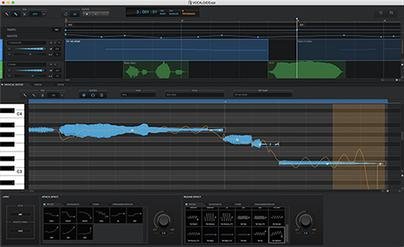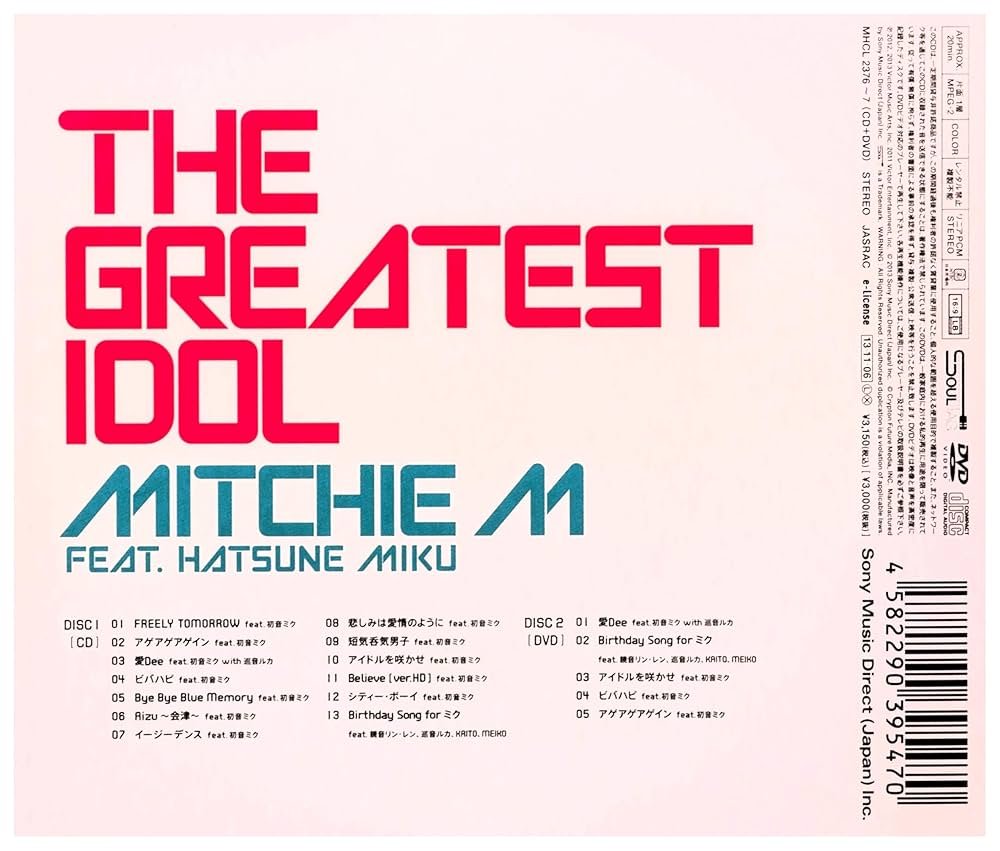Vocaloid is a fascinating technology that creates synthetic singing voices. These voices can be used in music production, allowing endless creativity.
Understanding the science behind Vocaloid involves exploring how voicebanks work. Voicebanks are collections of recorded sounds, made by real singers. These sounds are then processed and manipulated by the Vocaloid software to produce singing. It's like piecing together a musical puzzle.
The software uses algorithms to match pitch, tone, and expression. This ensures the synthesized voice sounds natural. Vocaloid opens up new possibilities for music creators, letting them craft unique vocal performances without a human singer. This blog will dive deeper into the intricate workings of Vocaloid voicebanks, shedding light on the technology that brings digital voices to life.
Introduction To Vocaloid
Vocaloid is a fascinating technology. It has transformed how music is created. This software allows users to generate singing voices on a computer. Artists worldwide use Vocaloid to bring their musical visions to life. But how does it all work? Let's dive into the science behind it.
What Is Vocaloid?
Vocaloid is a voice synthesizer software. It produces singing by using voicebanks. These voicebanks contain recordings of real human voices. Users input lyrics and melodies. The software then creates a singing voice from the voicebanks. This allows for a wide range of musical possibilities.
History Of Vocaloid Technology
Vocaloid technology began in the early 2000s. Yamaha Corporation developed the first version. It was released in 2004. Early versions were limited in quality. Over the years, the technology improved greatly. By the late 2000s, Vocaloid became popular in Japan. It spread to other countries soon after. Today, Vocaloid is a key tool in the music industry.

Credit: en.wikipedia.org
Voicebank Basics
Vocaloid is a fascinating technology. It allows users to create singing voices using a computer. The key component behind this is the voicebank. Understanding voicebanks helps in creating better music with Vocaloid.
Definition Of Voicebanks
A voicebank is a digital database. It contains recorded vocal samples. These samples are used to create singing voices. Each voicebank is unique. It captures the voice of a specific singer. The samples are processed and stored. This makes them ready for use in songs.
Components Of Voicebanks
Voicebanks have several components. The main ones are phonemes, pitch, and dynamics. Phonemes are basic sound units. They form the words and sentences. Pitch refers to the frequency of the voice. It determines the musical notes. Dynamics are the variations in volume. They add emotion and expression to the voice.
Another key component is the phoneme transition. It ensures smooth changes between sounds. This makes the singing sound natural. Each component is important. Together, they make the voicebank work effectively.
Voice Sampling
Voice sampling is a fundamental process in creating Vocaloid voicebanks. It involves recording various sounds and phonetic elements of a human voice. These recordings are then processed to generate a synthetic singing voice. Voice sampling ensures that the Vocaloid can sing naturally and expressively.
Recording Process
The recording process is crucial for developing a high-quality voicebank. First, a soundproof studio is set up. This is to ensure no background noise interferes with the recordings. The selected voice actor then begins the process.
The actor sings specific sounds, phonemes, and words. They may also sing entire phrases. These recordings capture different pitches and tones. This variety is necessary for realistic vocal synthesis. Each sound is recorded multiple times to ensure clarity and accuracy.
Voice Actor Selection
Selecting the right voice actor is essential for a successful voicebank. The actor's voice must match the desired character's personality. A clear, expressive, and versatile voice is ideal. The actor needs to have a good understanding of pitch and tone.
Auditions are often held to find the best voice. The chosen actor then undergoes rigorous training. This ensures they can maintain consistency throughout the recording process. A great voice actor can bring a Vocaloid character to life.

Credit: www.facebook.com
Sound Synthesis
Sound synthesis is at the heart of how Vocaloid voicebanks work. This process involves generating sound waves and combining phonemes to create realistic singing voices. Let's dive into the details of these fascinating steps.
Waveform Generation
Waveform generation is the first step in sound synthesis. This process involves creating digital sound waves that mimic human vocal sounds. These waves are generated by recording a human singer's voice. The recordings capture different pitches, tones, and nuances. The digital waves then replicate these qualities, making the sound more lifelike.
Phoneme Concatenation
Phoneme concatenation follows waveform generation. Phonemes are the smallest units of sound in speech. The system pieces these phonemes together to form words and sentences. This method ensures smooth transitions between sounds. The result is a natural-sounding voice that can sing any song. The process involves complex algorithms to ensure accuracy and fluidity.
Voicebank Types
The world of Vocaloid technology is fascinating. One of the most intriguing aspects is the variety of voicebanks available. Each type of voicebank offers unique features and capabilities. Understanding these types is key to grasping how Vocaloid works.
Standard Voicebanks
Standard voicebanks are the most basic type. They capture a singer's voice at different pitches and tones. These recordings are then processed. The result is a digital voice that can sing any song. This type is perfect for beginners. It offers a wide range of possibilities. The quality of the sound is usually good. Standard voicebanks are versatile and user-friendly. They form the foundation of most Vocaloid projects.
Append Voicebanks
Append voicebanks are an extension of standard voicebanks. They add more emotional depth and variety. These voicebanks capture different emotions. For example, they can express happiness, sadness, or anger. This makes the songs more expressive. Append voicebanks use additional recordings. These capture subtle changes in the singer's voice. The result is a richer, more nuanced sound. Many users prefer append voicebanks for their flexibility. They allow for more creative expression in music.

Credit: www.shutterstock.com
Tuning And Editing
Vocaloid technology relies heavily on tuning and editing to create realistic and expressive singing. This process transforms raw vocal samples into lifelike performances, allowing users to craft unique musical pieces. Understanding tuning and editing is essential for any Vocaloid enthusiast.
Pitch Adjustment
Pitch adjustment is crucial in Vocaloid to ensure each note sounds natural. Users can fine-tune the pitch to match the desired melody. This involves shifting the pitch higher or lower. Fine-tuning each note creates smooth transitions and a more realistic sound.
Automated tools help with basic pitch adjustments, but manual tweaking often yields better results. By carefully adjusting the pitch, users can make the vocal performance more precise and engaging.
Expression Controls
Expression controls in Vocaloid add emotion and depth to the voice. These controls modify volume, breathiness, and other vocal nuances. Users can adjust these parameters to make the voice sound more human.
For instance, increasing breathiness can make a voice sound softer and more intimate. Reducing volume at specific points can emphasize certain lyrics. Expression controls allow for a wide range of emotional expressions, making the performance more dynamic and engaging.
Understanding and using these controls effectively can significantly enhance the quality of the Vocaloid's singing. It adds a personal touch to each performance.
Software And Interfaces
Vocaloid software has changed how we create music. This innovative technology uses voicebanks to produce singing. Understanding the software and interfaces is key to using Vocaloid effectively. Let's dive into how it works.
User Interface Overview
The Vocaloid user interface is intuitive and user-friendly. It features a piano roll view for inputting notes. Users can easily drag and drop notes to create melodies. The interface allows for adjusting pitch, volume, and timing. This helps in creating realistic vocal performances. Each voicebank has unique characteristics, adding variety to your music.
Integration With Daws
Vocaloid integrates smoothly with Digital Audio Workstations (DAWs). This allows for seamless music production. Users can import MIDI files into Vocaloid. They can also export their vocal tracks to a DAW. This flexibility is crucial for professional music production. It enables users to mix and master their tracks effectively. Vocaloid's compatibility with major DAWs enhances its usability.
Applications And Usage
The applications and usage of Vocaloid technology are vast and diverse. This technology has significantly impacted various fields, from music production to live performances. Understanding the potential uses of Vocaloid voicebanks can help appreciate their value in the modern music industry.
Music Production
In music production, Vocaloid voicebanks offer unique opportunities. Producers can create songs without needing a human singer. This means they have more creative freedom and flexibility.
Here are some key benefits:
- Cost-effective: No need to hire singers.
- Time-saving: Immediate availability of voicebanks.
- Consistency: Same voice quality in every track.
Producers can use Vocaloid voicebanks to experiment with different genres. They can also customize the voice to fit the song's mood. This level of control is unmatched.
Live Performances
Vocaloid technology also shines in live performances. Virtual singers can perform on stage, offering a unique experience. These performances often use holograms to bring the virtual singers to life.
Advantages of using Vocaloid in live shows include:
- Novelty: Audiences see something new and exciting.
- Consistency: The performance is always perfect.
- Flexibility: Easy to schedule and plan.
Live performances with Vocaloid technology can draw large crowds. Fans are eager to see their favorite virtual singers in action. This blend of technology and art opens new possibilities.
Future Of Vocaloid
The future of Vocaloid holds a lot of promise. With advancements in technology, the capabilities of Vocaloid will continue to grow. This evolution will bring new opportunities for music creators and fans alike.
Technological Advances
Technological advances will play a key role in the future of Vocaloid. Improved voice synthesis algorithms will create more realistic and expressive voices. This will make Vocaloid sound even more like human singers.
Machine learning and artificial intelligence will further enhance the quality of voicebanks. These technologies will allow for better pitch, tone, and emotion control. As a result, Vocaloid performances will become more natural and engaging.
Hardware improvements will also contribute to Vocaloid's future. Faster processors and increased memory will enable more complex voice models. This will lead to smoother and more detailed vocal performances.
Potential Innovations
The potential innovations for Vocaloid are exciting. One possibility is the integration of real-time voice modulation. This would allow users to modify Vocaloid voices live during performances.
Another innovation could be the development of multilingual voicebanks. This would expand Vocaloid's appeal to a global audience. Singers could perform songs in multiple languages with ease.
Customizable voicebanks may also become a reality. Users could create unique voices tailored to their specific needs. This would offer greater creative freedom for music producers.
The future of Vocaloid will likely include more interactive features. Virtual reality and augmented reality could enhance the fan experience. Imagine attending a live Vocaloid concert in a virtual world!
Frequently Asked Questions
What Is A Vocaloid Voicebank?
A Vocaloid voicebank is a collection of pre-recorded vocal samples. These samples are used to create realistic singing vocals. Each voicebank is unique and tailored to specific vocal characteristics.
How Do Vocaloid Voicebanks Work?
Vocaloid voicebanks work by combining and processing recorded vocal samples. The software uses these samples to generate singing in various pitches and tones. Users input lyrics and melodies to create songs.
Can Anyone Create A Vocaloid Voicebank?
Creating a Vocaloid voicebank requires professional recording equipment and expertise. It involves recording a wide range of phonetic sounds. Therefore, it is usually done by professionals.
What Makes Vocaloid Voicebanks Unique?
Vocaloid voicebanks are unique due to their specific vocal characteristics. They capture the distinct qualities of the original voice actor. This uniqueness allows for diverse vocal performances.
Conclusion
Understanding Vocaloid voicebanks is fascinating and quite technical. These digital tools create lifelike singing voices. Composers can craft unique songs with precision. Users enjoy endless creative possibilities. Vocaloid technology continues to evolve and inspire. Learning about it can enrich your musical journey.
Dive deeper, explore, and create. The world of Vocaloid awaits your imagination.









